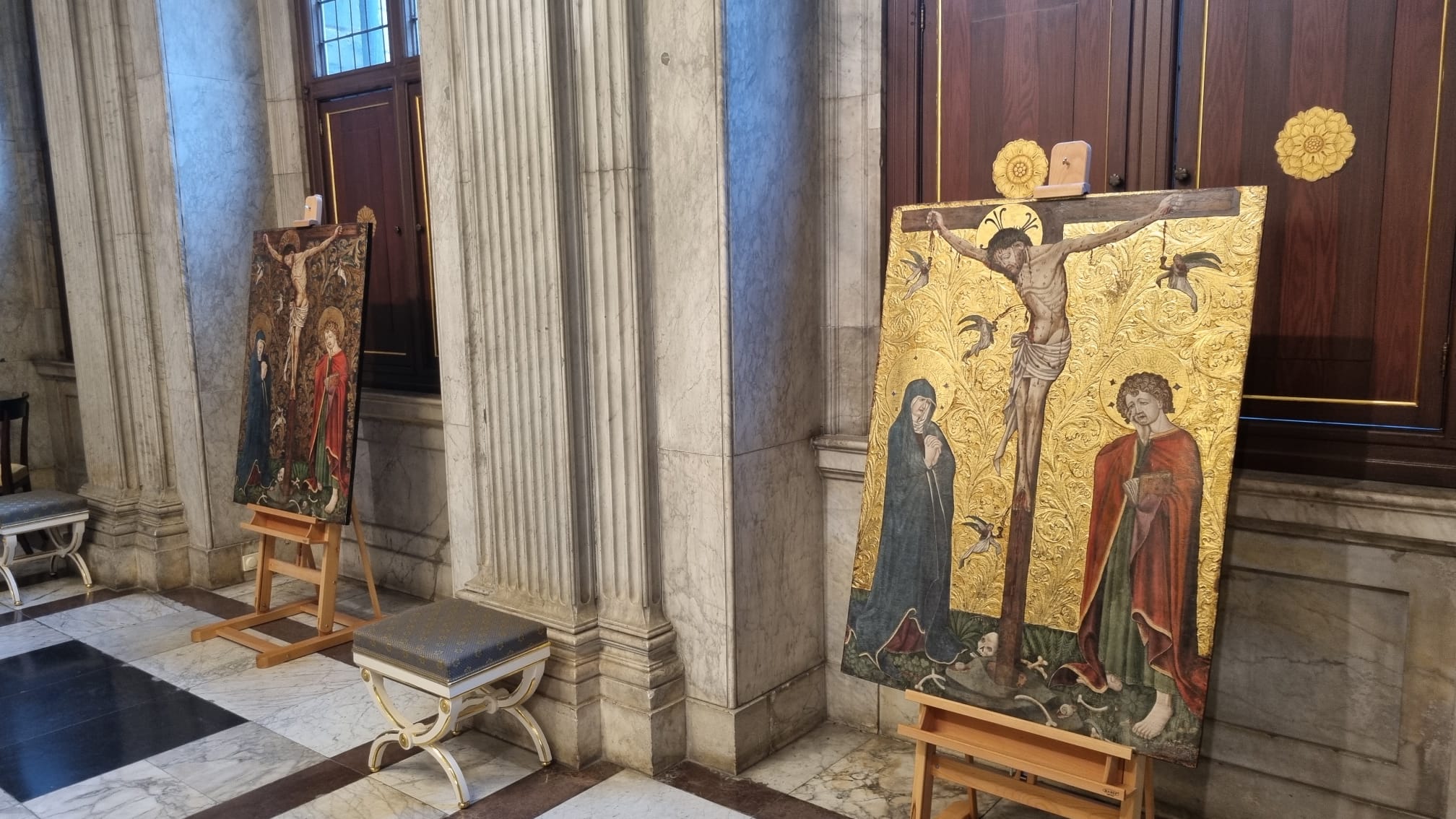On the 8th and 9th July 2021, in collaboration with the Museum Catharijne Convent, Utrecht University, Leiden University and Technische Universiteit Delft, the Factum Foundation carried out a non-contact, high-resolution 3D and colour recording of the painting. The panel was recorded using the Lucida 3D Scanner and panoramic composite photography, and the recording was the subject of an online symposium organised by the Catharijne Convent and TU Delft University to show the importance of high-resolution digitisation in heritage preservation and conservation.
The Crucifixion was scanned by Carlos Bayod (Lucida 3D Scanner) and Gabriel Scarpa (panoramic composite photography), with the assistance of Celestia Anstruther. The digital data obtained from the recording was processed at the Factum Foundation in Madrid to generate a multi-layered view of the painting as a starting point for an experimental process of non-contact digital restoration. Thanks to a grant from the Netherlands Institute for Conservation+Art+Science, the digital restoration was carried out by Factum Foundation’s 2D Imaging Department by combining digital and craft techniques and working in close collaboration with the promoters of the initiative Sanne Frequin, Liselore Tissen, Caroline van del Elst and Micha Leeflang.

Detail of the surface of the panel © courtesy of Museum Catharijne Convent

Recording the colour using composite photography © Factum Foundation
In 2022, the project moved to its next phase, with the creation of two physical facsimiles of the Crucifixion, one as recorded and one after the digital restoration. The surface of the panel was printed using elevated printing, moulded and then cast in gesso before printing the colour. The gilt details and the gilt surface were recreated using gold foil by Silvia Álvarez.
This project demonstrated how digital technologies and facsimiles can be part of the decision-making process in art conservation, and even become an alternative to physical intervention on the original. The project and the two facsimiles were presented by Sanne Frequin in the symposium Art and Humanities in Art Research, held at the Royal Palace in Amsterdam on November 20th, to a group of experts invited by the Royal House of the Netherlands.

Factum Foundation’s Eduardo López and Sanne Frequin working on the 3D surface of the painting during the digital restoration © Oak Taylor-Smith | Factum Foundation

Production of the facsimile © Oak Taylor-Smith | Factum Foundation


















